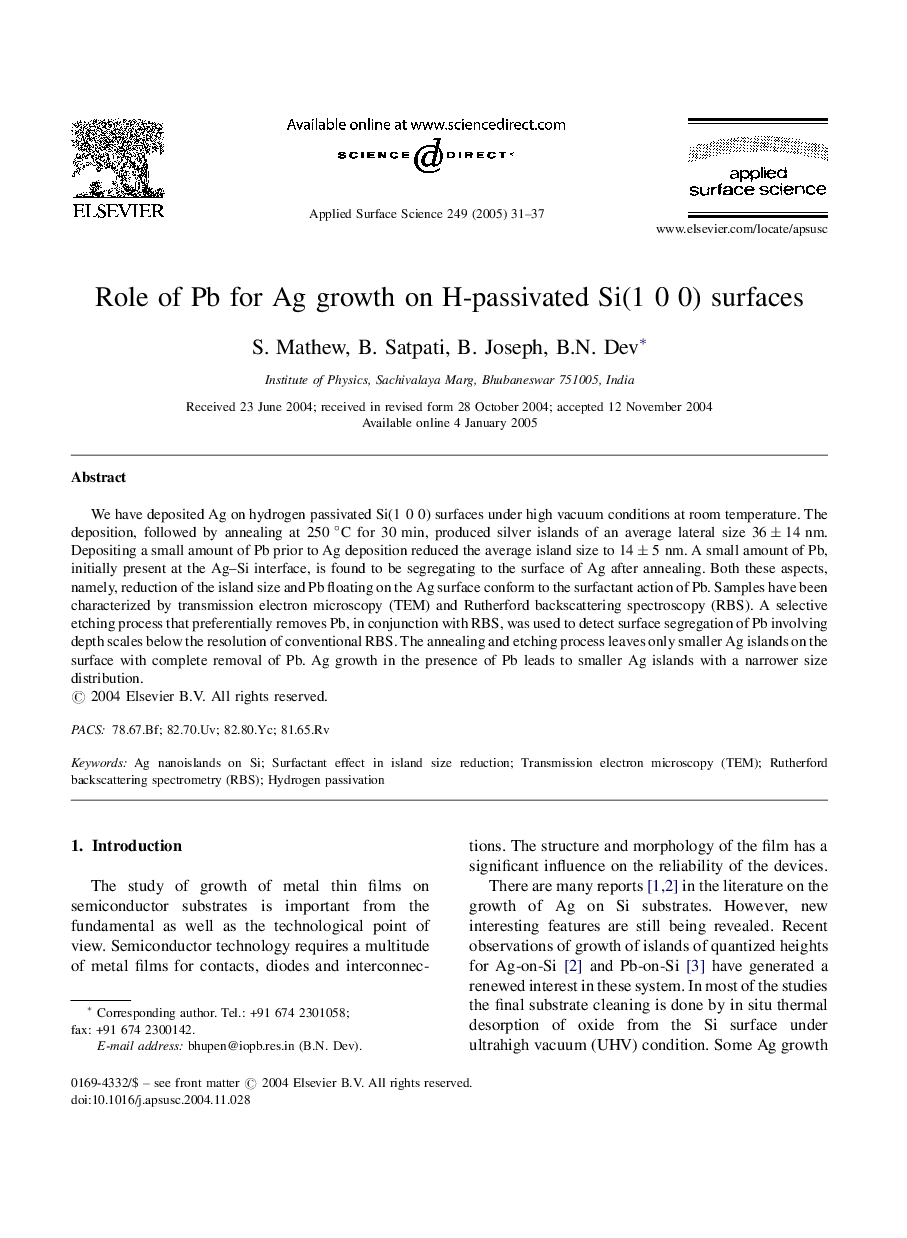| Article ID | Journal | Published Year | Pages | File Type |
|---|---|---|---|---|
| 9572395 | Applied Surface Science | 2005 | 7 Pages |
Abstract
We have deposited Ag on hydrogen passivated Si(1â0â0) surfaces under high vacuum conditions at room temperature. The deposition, followed by annealing at 250â°C for 30âmin, produced silver islands of an average lateral size 36±14ânm. Depositing a small amount of Pb prior to Ag deposition reduced the average island size to 14±5ânm. A small amount of Pb, initially present at the Ag-Si interface, is found to be segregating to the surface of Ag after annealing. Both these aspects, namely, reduction of the island size and Pb floating on the Ag surface conform to the surfactant action of Pb. Samples have been characterized by transmission electron microscopy (TEM) and Rutherford backscattering spectroscopy (RBS). A selective etching process that preferentially removes Pb, in conjunction with RBS, was used to detect surface segregation of Pb involving depth scales below the resolution of conventional RBS. The annealing and etching process leaves only smaller Ag islands on the surface with complete removal of Pb. Ag growth in the presence of Pb leads to smaller Ag islands with a narrower size distribution.
Keywords
Related Topics
Physical Sciences and Engineering
Chemistry
Physical and Theoretical Chemistry
Authors
S. Mathew, B. Satpati, B. Joseph, B.N. Dev,
